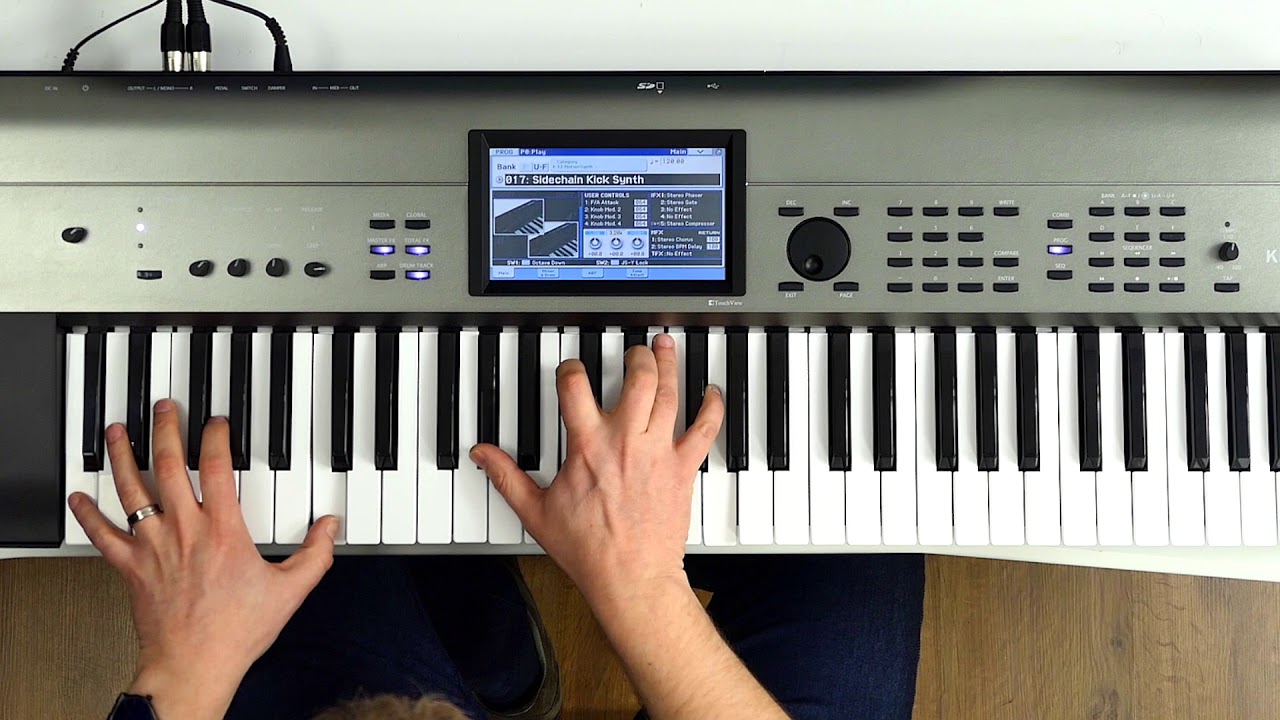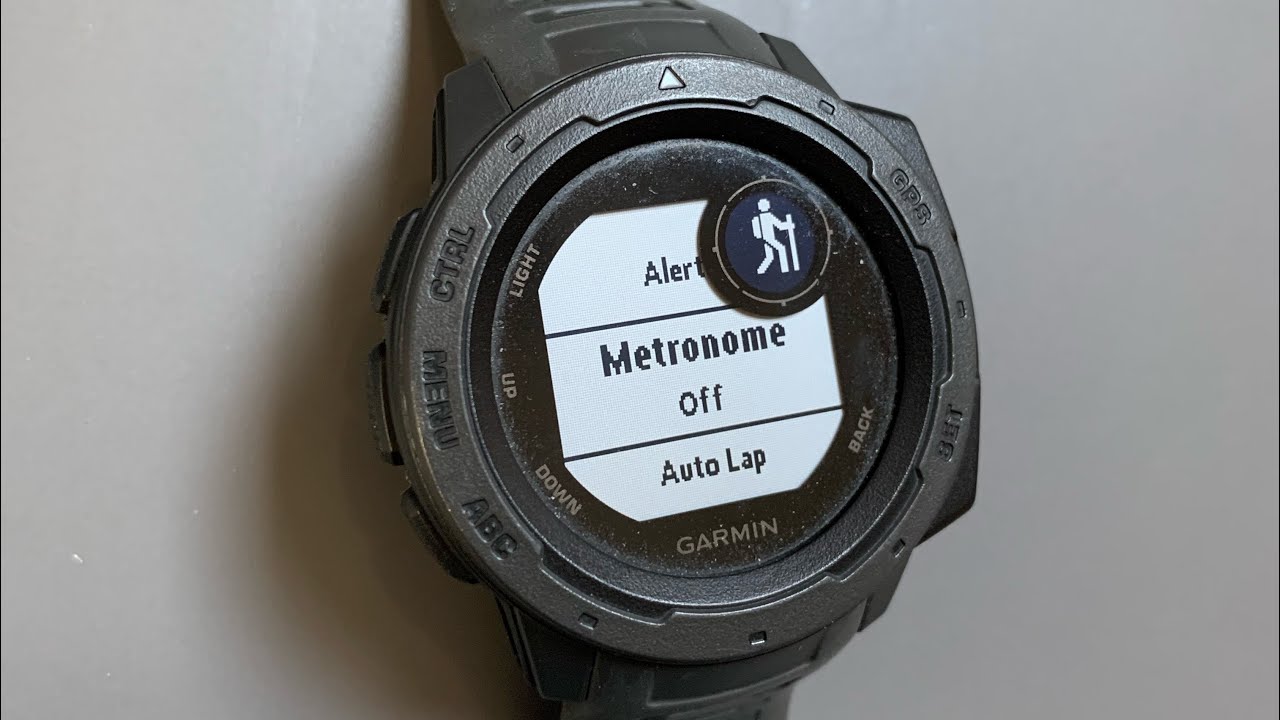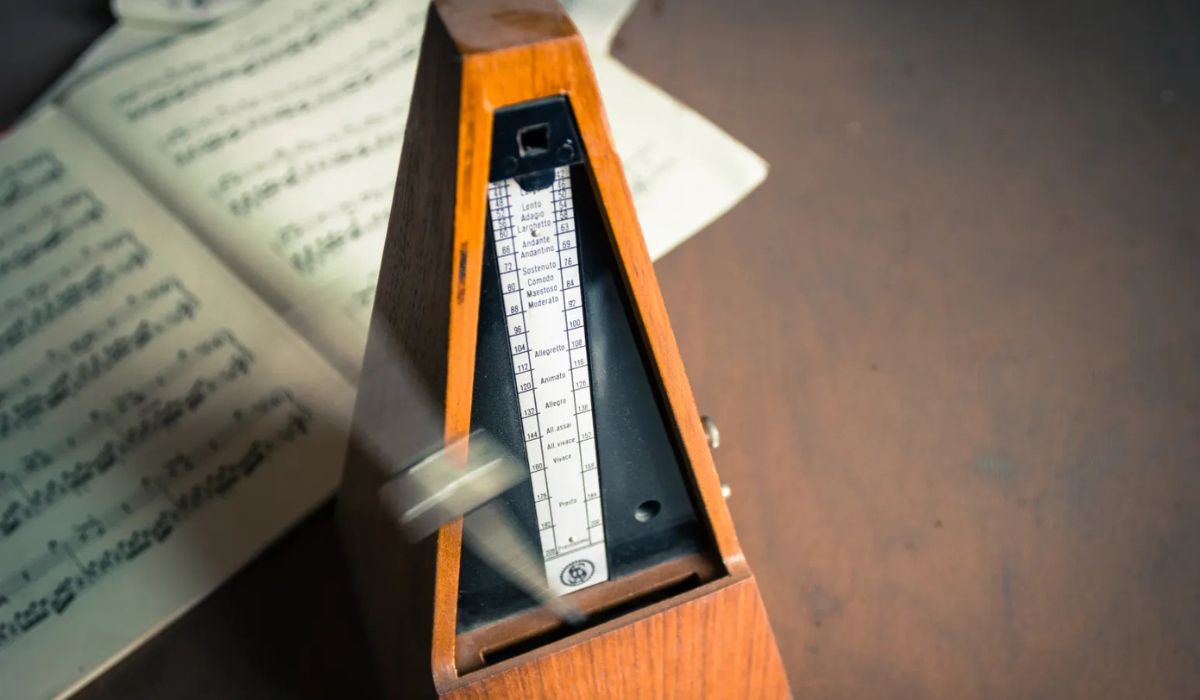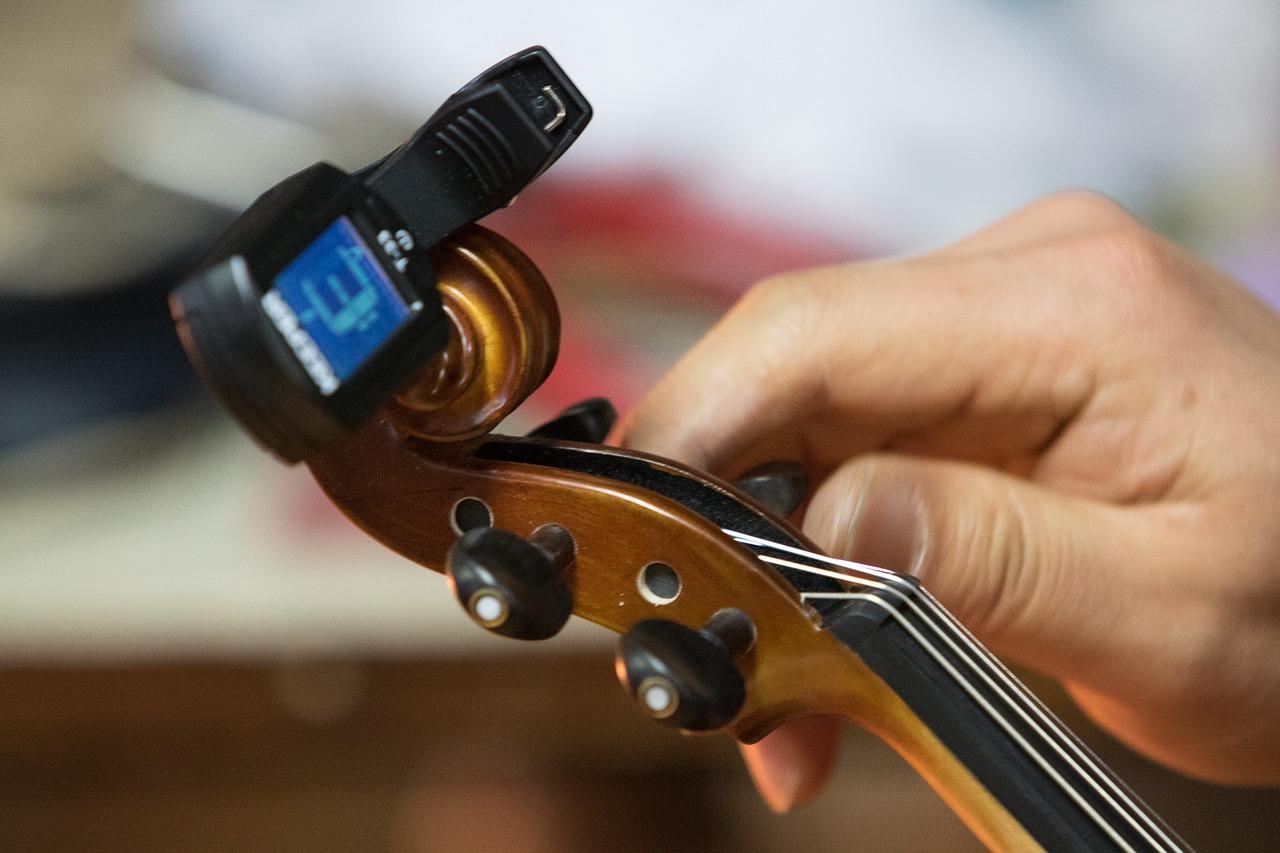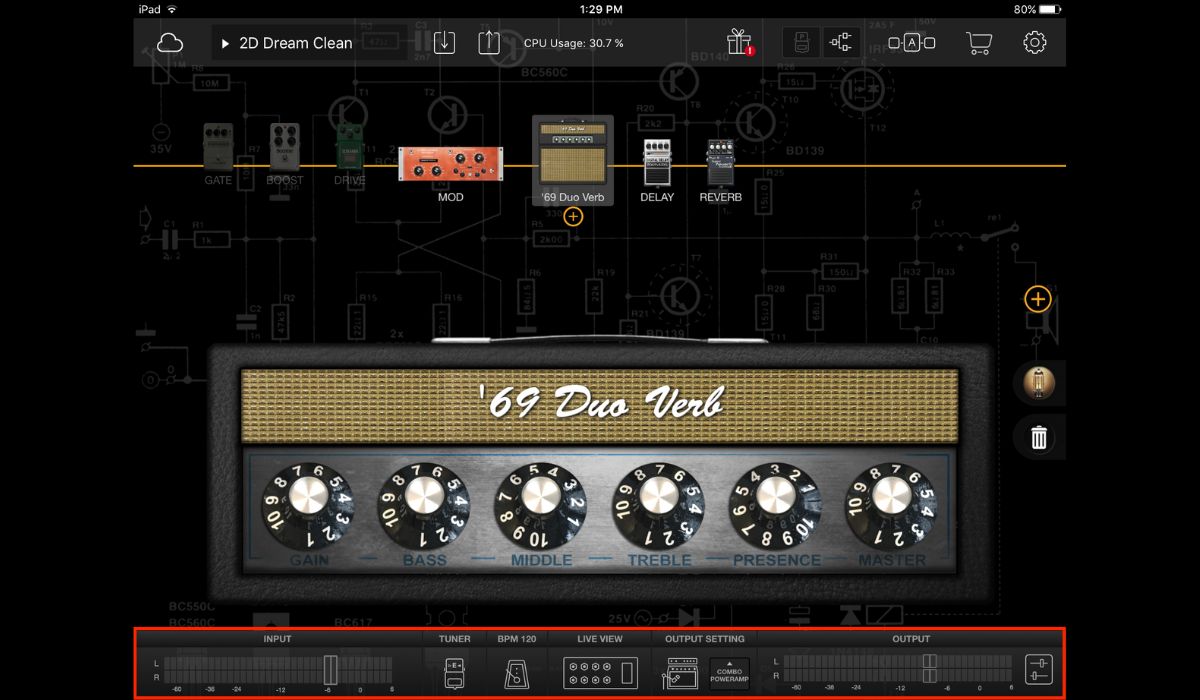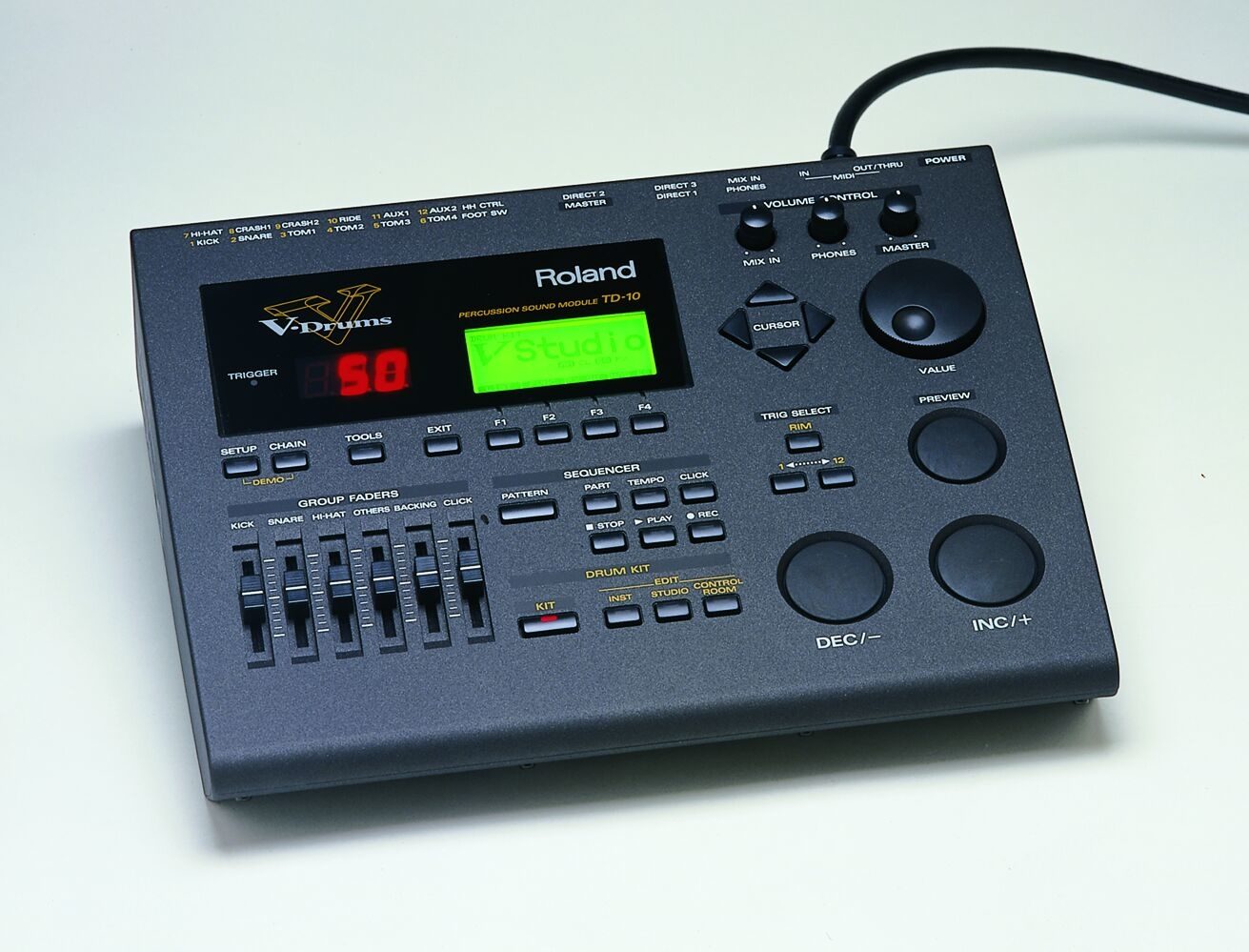Home>Production & Technology>Metronome>How To Use Metronome For Sweep
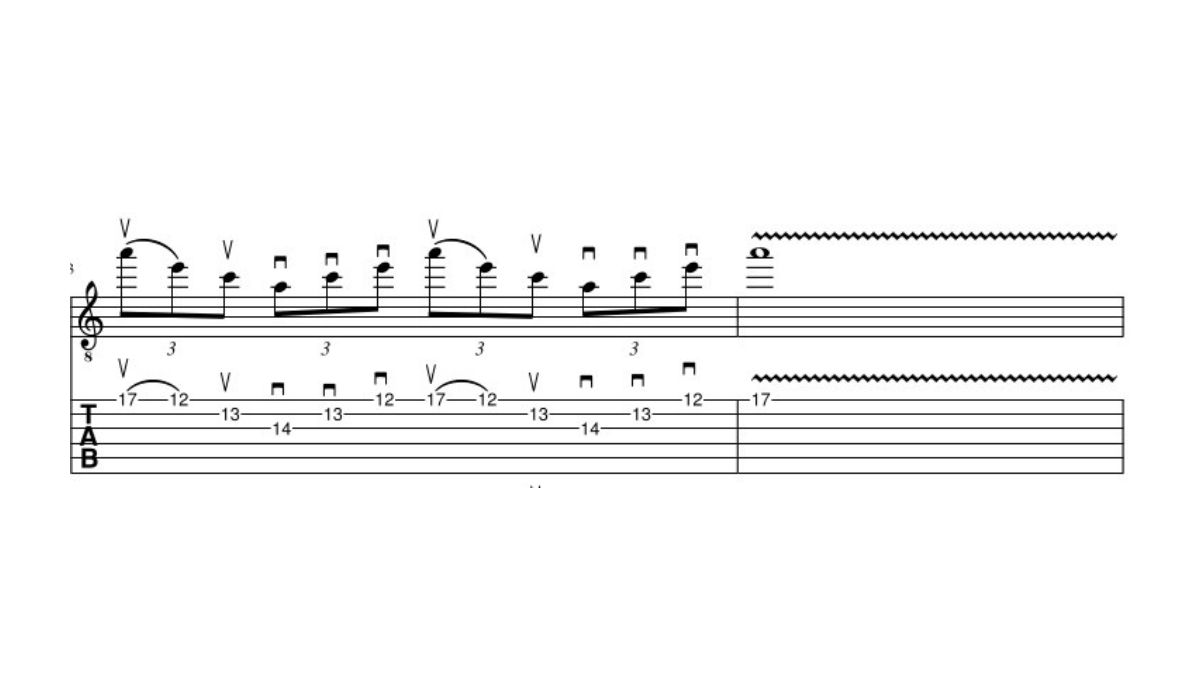

Metronome
How To Use Metronome For Sweep
Modified: January 28, 2024
Learn how to effectively use a metronome for sweep picking techniques and improve your guitar playing speed and precision. Master the art of timing and rhythm with the help of a metronome.
(Many of the links in this article redirect to a specific reviewed product. Your purchase of these products through affiliate links helps to generate commission for AudioLover.com, at no extra cost. Learn more)
Table of Contents
- Introduction
- What is a Metronome?
- Why Use a Metronome for Sweep?
- Choosing the Right Metronome
- Setting Up Your Metronome for Sweep
- Understanding Time Signatures
- Practicing Basic Sweep Technique with a Metronome
- Incorporating Speed and Accuracy Exercises
- Developing Sweep Patterns with a Metronome
- Tips for Effective Metronome Practice
- Conclusion
Introduction
Welcome to the world of sweeping technique! Whether you’re an aspiring guitarist or a seasoned player looking to enhance your skills, using a metronome can be a powerful tool in mastering the art of sweep picking. Sweeping, also known as economy picking, is a guitar technique that involves playing multiple strings in a fluid motion, creating a cascading effect of notes. It is commonly used in genres like rock, metal, and fusion to add speed, precision, and complexity to solos and riffs.
A metronome is a device that provides a steady and precise beat, helping you develop a strong sense of rhythm and timing. It’s a must-have tool for any guitarist, and when used correctly, it can greatly improve your sweep picking technique. In this article, we’ll explore how to effectively use a metronome for sweep picking, from choosing the right metronome to practicing different exercises and patterns.
Whether you’re a beginner or an advanced player, incorporating a metronome into your practice routine can yield significant benefits. It helps you develop a consistent tempo, improves your timing accuracy, and builds the muscle memory required for fluid and effortless sweeping. So, grab your guitar, dust off your metronome, and let’s dive into the world of using a metronome for sweep picking!
What is a Metronome?
A metronome is a device or software tool used by musicians to keep a steady and consistent beat while practicing or performing. It provides a rhythmic click or sound that helps musicians maintain a precise tempo and stay in sync with the music. Metronomes have been an integral part of musical training for centuries, helping musicians develop their timing, accuracy, and overall sense of rhythm.
Traditional metronomes consist of a mechanical pendulum or a spring-driven mechanism that produces an audible click or tick. These devices often have adjustable tempo settings, allowing musicians to select the desired beats per minute (BPM). They also typically have a dial or a sliding weight that can be moved to adjust the tempo accordingly.
In modern times, metronomes have evolved to include digital versions that offer more features and flexibility. These digital metronomes can be standalone devices, smartphone apps, or software programs running on computers or tablets. They provide a wide range of tempo options, different sounds, and additional features like subdivisions, accents, and visual indicators to enhance the user experience.
Metronomes are used by musicians of all skill levels and across various musical genres. They are particularly useful for instrumentalists who need precise timing, such as pianists, drummers, and guitarists. For guitar players, a metronome is an invaluable tool for mastering techniques like sweep picking, as it helps them achieve the necessary speed, accuracy, and coordination.
Regardless of the type or form, the primary function of a metronome remains the same – to provide a consistent beat that serves as a guide for musicians to stay in time. Whether you’re a beginner just starting out or an experienced musician looking to refine your skills, using a metronome can greatly enhance your musical abilities and elevate your performances to new heights.
Why Use a Metronome for Sweep?
Using a metronome for sweep picking can have a profound impact on your technique and overall musicality. Here are several compelling reasons why incorporating a metronome into your practice sessions is crucial for mastering sweep picking:
- Develops Consistent Timing: One of the key challenges in mastering sweep picking is maintaining a consistent rhythm and timing. A metronome provides a steady beat that helps you develop a sense of internal timing, enabling you to stay in sync with the music. It ensures that each note of the sweep is played evenly and accurately, creating a polished and professional sound.
- Improves Speed and Accuracy: Speed is an essential aspect of sweep picking. With a metronome, you can start slow and gradually increase the tempo as you build up speed and accuracy. Practicing with consistent beats allows you to focus on the mechanics of the technique, ensuring that each note is clean and precise. Over time, your speed and dexterity will improve, enabling you to execute fast and seamless sweep passages effortlessly.
- Builds Muscle Memory: Sweeping involves complex string skipping and alternate picking motions. By practicing with a metronome, you develop muscle memory, which is the ability to perform smooth and accurate movements without consciously thinking about each note. With consistent repetition, your fingers and pick will remember the motions required for sweep picking, making it easier to execute complex patterns effortlessly.
- Enhances Control and Dynamics: Effective sweep picking requires excellent control over the volume and dynamics of each note. The rhythmic guidance of a metronome helps you focus on playing with a controlled and balanced touch. It allows you to work on your attack, release, and sustain for each note in the sweep pattern, resulting in a more expressive and dynamic performance.
- Provides Objective Progress Measurement: With a metronome, you can objectively measure your progress in sweep picking. By gradually increasing the tempo over time, you can track improvements in your speed and accuracy. This provides motivation and a sense of accomplishment, as you can clearly see your technique advancing and your ability to handle faster tempos improving.
In summary, using a metronome for sweep picking is essential for developing consistent timing, improving speed and accuracy, building muscle memory, enhancing control and dynamics, and providing objective progress measurement. It is a valuable tool that guides and challenges you to become a more precise and accomplished sweep picker. So, grab your metronome and embark on a journey of mastering this impressive technique!
Choosing the Right Metronome
When it comes to choosing a metronome for sweep picking, there are several factors to consider. Let’s take a look at some key aspects that will help you find the right metronome for your needs:
- Intuitive Interface: Look for a metronome that has an intuitive and user-friendly interface. You want a device or app that is easy to navigate and adjust the settings. This will allow you to focus on your practice rather than spending time figuring out how to operate the metronome.
- Adjustable Tempo Range: Make sure the metronome offers a wide range of adjustable tempos to accommodate various styles and levels of difficulty. The ability to set the tempo precisely to match the desired speed for your sweep picking exercises is essential.
- Variable Time Signatures: Choose a metronome that allows you to switch between different time signatures. Sweep picking often involves complex rhythmic patterns, and being able to practice in different time signatures like 4/4, 6/8, or even odd meters enhances your versatility and adaptability as a guitarist.
- Multiple Sound Options: Having different sound options is beneficial to prevent monotony and keep your practice sessions interesting. Look for a metronome that offers a variety of sounds for the click or beat, such as traditional woodblock, cowbell, or even a drum sound.
- Visual and Vibrational Feedback: Some metronomes come with visual indicators or LED lights that flash in time with the beat, making it easier to follow along. Others even offer vibrational feedback, which can be helpful if you prefer a tactile cue instead of an audible one.
- Portable and Convenient: Consider the portability and convenience of the metronome. If you’re always on the go, a metronome app on your smartphone might be a practical choice. However, if you prefer a standalone device, look for one that is compact, lightweight, and easy to carry in your gig bag or guitar case.
Ultimately, the right metronome for you is the one that feels comfortable to use and meets your specific requirements. Consider your budget, personal preferences, and the features that are most important to you. Experiment with different metronomes to find the one that enhances your practice experience and motivates you to improve your sweep picking technique.
Remember, the metronome is a tool to support your practice, so choose one that helps you stay focused, motivated, and helps you progress on your journey to becoming a skilled sweep picker.
Setting Up Your Metronome for Sweep
Setting up your metronome properly is essential to ensure effective practice sessions for sweep picking. Here are some steps to follow when configuring your metronome:
- Select the Desired Tempo: Choose an appropriate tempo for your practice session. If you are new to sweep picking, start at a slower tempo to allow yourself to focus on accuracy and coordination. As you become more comfortable, gradually increase the speed. Remember, it’s better to start slow and build up speed gradually rather than rushing into faster tempos and sacrificing precision.
- Set the Time Signature: Select the appropriate time signature for your sweep picking exercise. The most common time signature for sweep patterns is 4/4, but feel free to experiment with other time signatures to challenge yourself and expand your rhythmic knowledge.
- Choose the Sound: Decide which sound you want your metronome to produce. You can choose a traditional click sound, a digital beep, or even a drum sound. It’s a good idea to select a sound that you find pleasant and easy to follow, as it will keep you engaged during your practice.
- Set the Volume: Adjust the volume of the metronome to a level that is audible but not overpowering. You want the metronome to be clearly heard, but it should not distract you from your playing or overpower the sound of your guitar.
- Use Subdivisions: Many metronomes offer the option to use subdivisions, which divide the beat into smaller units. For example, you can set the metronome to click on each quarter note or even on each eighth note. This is especially useful when practicing complex sweep patterns with faster note divisions, as it helps you stay in sync and maintain a steady rhythm.
- Align with the Click: Before you start playing, take a moment to mentally align yourself with the metronome click. Internalize the beat and feel its pulse. This will help you stay synchronized with the metronome throughout your practice, ensuring that your sweep picking remains in time.
Once you have set up your metronome according to your preferences, it’s time to dive into your sweep picking practice. Start with simple exercises and gradually progress to more complex patterns. Remember to focus on precision, clarity, and maintaining a consistent tempo. The metronome will serve as your guide, providing you with a steady beat to follow and helping you develop a solid foundation in sweep picking.
Keep in mind that using a metronome for sweep picking is not only about playing fast but also about playing accurately and in sync with the rhythm. Over time, with regular practice and dedication, you will notice significant improvements in your sweep picking technique and overall musicianship.
Understanding Time Signatures
Time signatures play a crucial role in music, including sweep picking. They provide a framework for organizing beats and rhythms within a piece of music. Understanding time signatures is essential for musicians, as it allows them to interpret and play music accurately. Here’s a breakdown of the basics:
A time signature consists of two numbers written as a fraction. The top number represents the number of beats in each measure, while the bottom number indicates the type of note that receives one beat. The most common time signature in music is 4/4, also known as “common time.” In 4/4 time, there are four beats in each measure, and the quarter note receives one beat.
When it comes to sweep picking, different time signatures can add complexity and variety to your playing. Here are a few examples:
- 4/4 Time: As mentioned earlier, 4/4 time is the most common time signature and serves as the foundation for many music genres. The steady four beats in each measure provide a strong rhythmic structure for sweep picking exercises.
- 3/4 Time: In 3/4 time, there are three beats in each measure, and the quarter note still receives one beat. This time signature creates a waltz-like feel and can add a sense of elegance and movement to your sweep picking patterns.
- 6/8 Time: A time signature of 6/8 indicates that there are six beats in each measure, with the eighth note receiving one beat. This time signature is commonly associated with compound rhythms and gives a distinctive, syncopated feel to sweep picking patterns.
- Odd Meters: Beyond the common time signatures, you can explore odd meters like 5/4, 7/8, or 9/8, which create asymmetrical rhythms. These time signatures can add complexity and challenge to your sweep picking exercises, pushing you to think and play in unconventional ways.
Understanding time signatures allows you to interpret and perform sweep picking exercises with precision. It helps you anticipate the accents and emphasizes the structure of the music you’re playing. By practicing sweep picking in different time signatures, you’ll expand your rhythmic vocabulary and become a more versatile and adaptable guitarist.
As you progress in your sweep picking skills, don’t be afraid to experiment with different time signatures and explore the rhythmic possibilities they offer. This will not only enhance your ability to play sweep picking patterns but also enrich your overall musicality as a guitarist.
Practicing Basic Sweep Technique with a Metronome
Practicing basic sweep technique with a metronome is an excellent way to build a strong foundation and develop the necessary coordination and precision. Here are some steps and exercises to help you get started:
- Start Slow: Set the metronome to a comfortable tempo, ensuring that you can play the exercise accurately. It’s better to start slow and focus on correct technique rather than rushing through the exercise and sacrificing accuracy.
- Focus on Hand Syncing: Pay close attention to synchronizing the movement of both hands. The picking hand should smoothly glide across the strings, while the fretting hand cleanly presses down the necessary notes. Practice each sweep motion slowly and make sure the notes sound clear and evenly played.
- Practice Ascending and Descending Single String Sweeps: Begin with simple exercises that involve sweeping across a single string. Start by descending from the highest to the lowest note and then ascend back up. Use consistent and steady picking motions, ensuring that each note sounds distinct and connected.
- Add String Changes: Once you’ve become comfortable with single-string sweeps, gradually introduce string changes. Start with two-string sweeps and progressively increase the number of strings as you gain confidence and control. Focus on smoothly transitioning between strings without losing the fluidity of the sweep motion.
- Practice Different Patterns: Explore different sweep patterns to challenge yourself and improve your versatility. This can include arpeggios, triads, or any other melodic sequences that require sweeping across multiple strings. Set the metronome to the desired tempo and practice these patterns with precision and accuracy.
- Gradually Increase the Tempo: As you become more comfortable with the basic sweeping technique, gradually increase the tempo on the metronome. Push yourself to play faster while maintaining control and clarity in your technique. Be patient and focus on accuracy before speed.
- Monitor Your Progress: Use the metronome as a tool to measure your progress. Start with a manageable tempo and gradually work your way up. Monitor your ability to stay in sync with the metronome and increase the tempo as you feel confident and comfortable.
Consistency and patience are key when practicing basic sweep technique with a metronome. Give yourself regular practice sessions dedicated to sweep picking exercises, and be diligent in your approach. Make use of the steady beat provided by the metronome to develop a strong sense of timing and help you maintain a consistent tempo.
Remember, it’s crucial to start with slow and accurate practice before building speed. As you become more proficient, you can experiment with different patterns and explore more challenging exercises. The metronome will serve as your guide, helping you develop the necessary muscle memory and coordination required for effective sweep picking.
Stay focused, maintain a relaxed and controlled technique, and have fun embracing the art of sweep picking with the assistance of a metronome. With time and dedicated practice, you’ll notice significant improvements in your technique, precision, and overall musicality.
Incorporating Speed and Accuracy Exercises
Once you have developed a solid foundation with the basic sweep technique, it’s time to incorporate speed and accuracy exercises into your practice routine. These exercises will help you build dexterity, control, and precision in your sweep picking. Here are some exercises to consider:
- Slow-Motion Sweeps: Set the metronome to a slow tempo and perform your sweep picking exercises at a quarter or half the speed of your usual tempo. This allows you to focus on every detail of your technique, ensuring that each note is clean and accurately executed. Gradually increase the speed as you become comfortable.
- Incremental Tempo Increase: Start with a comfortable tempo on the metronome and play a sweep picking pattern. Once you feel confident and in control, increase the tempo by a few BPM. Repeat the exercise at this new speed until you feel comfortable. Continue this process of gradually increasing the tempo, challenging yourself to play faster while maintaining accuracy.
- Isolated String Exercises: Practice sweeping across individual strings using arpeggios or melodic patterns. Focus on playing each note with precision and clarity, ensuring that the transition from one string to another is smooth and seamless. This exercise helps improve string tracking and finger coordination.
- String Skipping Exercises: Incorporate string skipping into your sweep picking exercises. Practice skipping over one or more strings while maintaining a steady and fluid motion. This exercise helps develop agility and finger independence, allowing you to execute complex sweep patterns with ease.
- Accent on Upstrokes: To enhance your picking control, try accenting the upstrokes in your sweep picking patterns. This can be done by slightly emphasizing the upstrokes with a stronger attack. This exercise helps improve your picking hand coordination and adds dynamic variation to your playing.
- Muted Sweeps: Experiment with sweeping techniques where you lightly touch the strings with your fretting hand or palm to create a muted or staccato effect. This exercise helps develop control over your hand placement and allows you to explore different rhythmic possibilities within your sweep picking patterns.
- Descending and Ascending Patterns: Practice alternating between descending and ascending sweep picking patterns. Start with a descending pattern and seamlessly transition into an ascending pattern, or vice versa. This exercise helps improve your ability to change directions smoothly and maintain a consistent flow in your sweep picking.
Remember, when incorporating speed and accuracy exercises, it’s important to focus on maintaining a relaxed and controlled technique. Be mindful of any tension or unnecessary movements in your hands and work on minimizing them. Additionally, be attentive to your timing and rhythmic precision, ensuring that each note aligns with the metronome beat.
Take your time with these exercises, increasing the tempo gradually as your skills improve. It’s better to play slower with precision than rush through at faster tempos with sloppy technique. Aim to strike a balance between speed and accuracy, and find a tempo where you can comfortably execute the exercise while remaining in control.
Incorporating speed and accuracy exercises into your practice routine will help you push the boundaries of your sweep picking technique and improve your overall playing. Remember to practice consistently, maintain a positive mindset, and celebrate the progress you make along the way.
Developing Sweep Patterns with a Metronome
Developing sweep patterns with the metronome is a great way to expand your repertoire and add complexity to your sweep picking technique. By incorporating the metronome into your practice sessions, you can improve your rhythm, timing, and coordination. Here’s how to develop sweep patterns effectively:
- Start Simple: Begin by practicing simple sweep patterns that involve a small number of strings. This could be a three-string sweep or a basic arpeggio shape. Set the metronome to a comfortable tempo and play the pattern slowly, focusing on accurate note execution and synchronizing your hands.
- Gradually Increase Complexity: As you feel more comfortable with the basic sweep patterns, gradually increase the complexity by adding more strings or experimenting with different arpeggio shapes. This could include four-string sweeps, five-string sweeps, or incorporating extended chords into your patterns.
- Align with the Metronome Click: Make sure to align your sweep picking with the clicks of the metronome. Listen closely to the beat and ensure that each note of the sweep pattern falls precisely on the designated click. This will develop your sense of timing and help you stay in sync with the metronome.
- Focus on Accuracy: Pay close attention to the accuracy of your sweeps. Ensure that each note is clean and clear, and that there are no unintended muted or buzzed strings. Use slow and controlled movements to execute the sweep pattern accurately, maintaining proper finger placement and picking technique.
- Challenge Your Speed: Once you have mastered the sweep pattern at a slower tempo, gradually increase the speed on the metronome. Push yourself to play the pattern at faster tempos while maintaining accuracy and clarity. This will enhance your speed and dexterity, improving your ability to play complex sweep patterns effortlessly.
- Experiment with Rhythmic Variations: Use the metronome as a foundation to experiment with different rhythmic variations within your sweep patterns. You can try playing triplets, syncopated rhythms, or even odd time signatures. This will expand your rhythmic vocabulary and add more dynamics and interest to your sweep picking.
- Create Your Own Sweep Patterns: Once you feel comfortable with existing sweep patterns, try creating your own. Experiment with different note sequences, intervals, and melodic ideas. Use the metronome as a guide to maintain a consistent rhythm while exploring new and unique sweep patterns.
Remember to practice with a focused and attentive mindset, committing to clean execution and precision with each sweep pattern. The metronome serves as your reliable guide, ensuring that you stay in time and develop a solid sense of rhythm and timing.
Consistency is key when developing sweep patterns with a metronome. Dedicate regular practice sessions to work on your sweep picking techniques, exploring new patterns, and gradually increasing the difficulty as you progress. Be patient with yourself and celebrate even the smallest improvements along the way.
By incorporating the metronome into your practice routine and diligently developing sweep patterns, you’ll expand your skill set, enhance your musicality, and become a more versatile and accomplished sweep picker.
Tips for Effective Metronome Practice
Practicing with a metronome can greatly enhance your sweep picking technique and overall musical skills. Here are some tips to make your metronome practice sessions more effective:
- Start Slow: When beginning a new exercise or pattern, always start at a slower tempo. This allows you to focus on accuracy and coordination. As you become more comfortable and confident, gradually increase the tempo.
- Play in Time: Make sure to align your playing with the metronome’s beat. This means keeping your notes and sweeps exactly in sync with the clicks or ticks. Stay attentive and avoid rushing or lagging behind the metronome’s tempo.
- Focus on Precision: Use the metronome to develop clean and precise sweep picking technique. Pay attention to every note, ensuring that they are executed accurately and with clarity. Use slow practice to focus on maintaining proper finger placement and consistent picking motion.
- Use Subdivisions: Utilize the metronome’s subdivisions to practice different rhythmic patterns and subdivisions. By subdividing the beat, you can challenge your sense of timing and improve your ability to play complex rhythms within your sweep patterns.
- Vary the Tempo: Experiment with different tempo settings on the metronome. Practice at slower tempos to build accuracy and control, and then challenge yourself with faster tempos to improve speed and dexterity. Varying the tempo keeps your practice sessions engaging and helps build versatility.
- Listen Intently: Pay close attention to the metronome’s beat while playing. Listen for any discrepancies or inconsistencies in your playing. The metronome serves as a guide, and by actively listening, you can identify areas that need improvement and adjust accordingly.
- Practice with Dynamic Expression: Use the metronome to work on dynamic expression in your sweep picking. Experiment with playing softer or louder to create variations in volume and intensity within your patterns. This adds musicality and depth to your playing.
- Record Yourself: Occasionally record your practice sessions while using the metronome. This allows you to objectively evaluate your performance and identify areas for improvement. Listening back to your recordings can provide valuable insights and help track your progress over time.
- Stay Consistent: Make metronome practice a regular part of your routine. Consistency is key to building muscle memory and improving your sense of time. Dedicate specific practice sessions to metronome work, ensuring that you devote time to developing your sweep picking technique.
- Stay Motivated: Keep a positive mindset and stay motivated during metronome practice. View it as an opportunity to refine your skills and grow as a musician. Celebrate your achievements, no matter how small, and maintain a mindset focused on continuous improvement.
Integrating these tips into your metronome practice sessions will maximize your progress and ensure that you get the most out of your sweep picking exercises. Remember, the metronome is a valuable tool that helps you develop precision, timing, and control in your playing. Embrace it as your musical companion and watch your sweep picking skills soar to new heights.
Conclusion
Incorporating a metronome into your sweep picking practice can be a game-changer for your technique, precision, and overall musicianship. By utilizing the steady beat and rhythmic guidance of the metronome, you can develop a strong sense of timing, improve your speed and accuracy, and build a solid foundation for mastering sweep picking.
Throughout this article, we’ve explored the importance of using a metronome for sweep picking, from understanding its purpose and benefits to incorporating it effectively into your practice routine. We’ve discussed how to choose the right metronome, set it up for sweep practice, and explore different time signatures. We’ve also covered various exercises, tips, and techniques to enhance your metronome practice and take your sweep picking to the next level.
Remember, when using a metronome, start slow and focus on accuracy. Gradually increase the tempo as your skills improve, but always prioritize precision over speed. Pay attention to your timing, alignment with the metronome beats, and the clarity of your notes. Practice a variety of patterns, incorporate different rhythms, and challenge yourself to play with control and expression.
Metronome practice requires discipline, patience, and consistent effort. It’s about training your muscle memory, refining your technique, and developing a deep understanding of rhythm. Embrace the metronome as your musical companion and practice with intention, focusing on every detail to achieve mastery in sweep picking.
So, grab your guitar, set up your metronome, and embark on a journey of sweep picking excellence. With dedication, perseverance, and the guidance of the metronome, you’ll unlock new levels of speed, precision, and musicality in your playing.
Keep practicing, stay committed to improvement, and enjoy the satisfaction of successfully integrating the metronome into your sweep picking journey. Happy playing!

